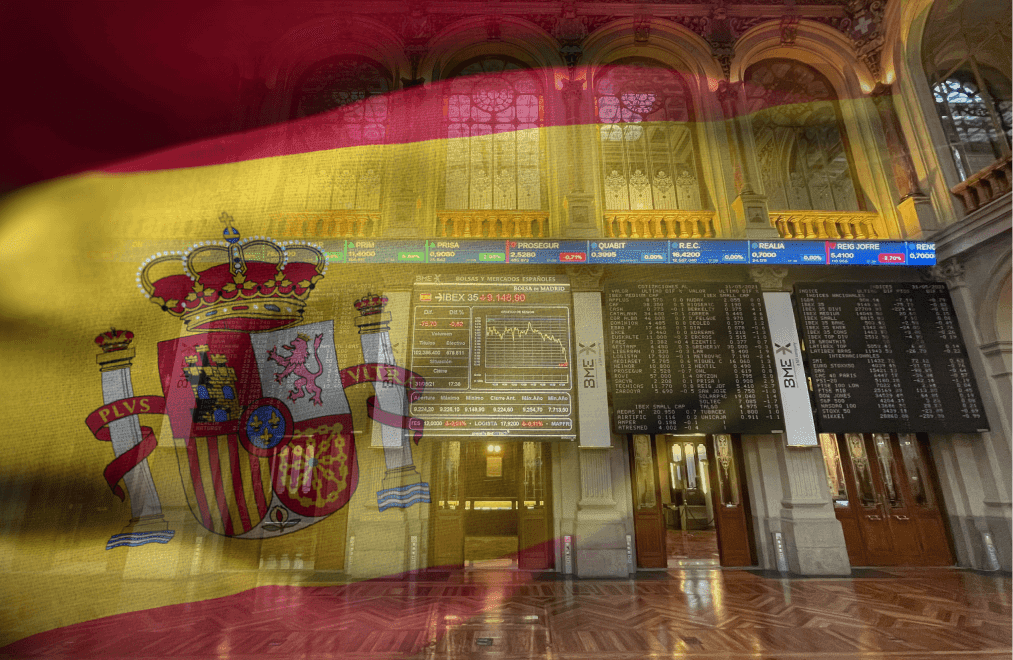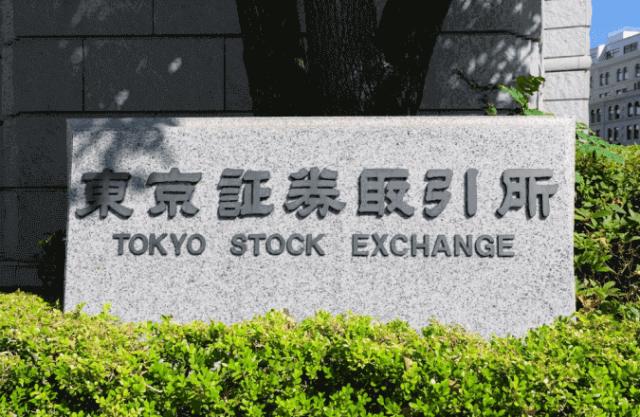A complete guide to the Spain 35

Learn all about the Spain 35 index, from its price journey to what impacts its value, and document its movements with the live Spain 35 chart.
What is the Spain 35?
The Spain 35 is a benchmark stock market index that tracks the performance of the 35 most liquid Spanish stocks traded on the Madrid Stock Exchange. It's similar to the Dow Jones Industrial Average in the US (traded as the US Wall Street 30) in that it represents the performance of major companies within Spain's economy.
The index comprises a variety of companies from different sectors, giving an overview of the general economic health of Spain. The Spain 35 is calculated, managed, and published by Bolsas y Mercados Españoles (BME), which deals with the organisation of the official secondary markets in Spanish stocks.
The components of the Spain 35 are reviewed twice annually to ensure they accurately represent the most actively traded and largest stocks on the Madrid Stock Exchange. This index is widely used by investors and financial analysts to gauge market trends and as a benchmark for Spanish equity performance.
What is the Spain 35 price history?
The Spain 35 was introduced in 1992, with a base value of 3,000 points. From the start, the index has experienced various price fluctuations driven by both domestic and international economic events.
One of the earliest challenges faced by the Spain 35 occurred in the late 1990s with the Asian financial crisis of 1997, which triggered global market volatility. However, the index recovered and gained further in the wake of the introduction of the Euro in 1999, which facilitated easier trade and financial transactions across Europe.
The early 2000s brought more turbulence with the bursting of the dot-com bubble, impacting global markets, including the Spain 35, and initiating a worldwide economic downturn. Recovery was slow, but the mid-2000s saw growth until the global financial crisis of 2008 hit. This crisis caused one of the most significant drops in the index’s history, with the Spain 35 plummeting as the Spanish economy, heavily invested in real estate, faced a severe recession.
Post-2008, the European sovereign debt crisis further impacted the index, particularly between 2010 and 2012, when fears regarding the solvency of European nations, including Spain, led to record lows. During this period, the Spain 35 was severely affected by austerity measures, high unemployment, and a contracting economy.
In more recent years, the Spain 35 has shown resilience and periods of recovery, interspersed with volatility. For instance, the political uncertainty surrounding the Catalonia independence referendum in October 2017 saw the index drop sharply, reflecting worries about the potential impact of regional instability on the Spanish economy.
The Covid-19 pandemic in 2020 led to another significant market downturn, as lockdowns and economic halts induced global panic. The Spain 35 dropped as a result, but global stock recoveries happened later in the year amid significant monetary support from central banks and optimism about economic recovery.
As of the present day, the Spain 35 continues to be influenced by global economic conditions, including inflation rates, geopolitical tensions, and the international energy crisis. The index remains a vital indicator of the economic health of Spain and serves as a crucial gauge for investors looking to understand market trends and economic performance in the region.
What factors might affect the performance of the Spain 35?
The performance of the Spain 35 may be impacted by a range of key fundamental events that are important to research when trading the index. Be sure to check out our market analysis section for regular insights into the key price drivers for your favourite markets. Here are a few of the main factors to consider for the Spain 35:
-
Economic indicators: the performance of the Spain 35 is closely tied to the health of Spain's economy. Major indicators like GDP growth rates, unemployment figures, and consumer confidence impact investor sentiment and influence the index. Strong GDP growth typically signals a healthy economy, boosting investor confidence and stock prices, while high unemployment can have the opposite effect. Consumer confidence reflects how optimistic or pessimistic consumers are about their financial future and the overall economic outlook, affecting their spending and investment behaviours, which in turn influence the stock market.
-
Monetary policy: the European Central Bank (ECB) plays a very important role in influencing the economic landscape that affects the Spain 35, through its control over monetary policy across the eurozone, which includes Spain. Decisions on interest rates are particularly impactful; lower interest rates tend to reduce the cost of borrowing, encourage borrowing and investment, and generally support higher stock prices. Additionally, measures like quantitative easing, aimed at stimulating the economy by increasing the money supply, can lead to rises in stock market indices such as the Spain 35 by inflating asset prices.
-
Global economic conditions: as a significant part of a globally interconnected market, Spain’s stock market is sensitive to international economic trends and crises. Global economic health, international trade conditions, and financial stability all play essential roles in shaping the performance of the Spain 35. For example, economic slowdowns in key trade partners, international trade wars, or global financial crises can negatively affect the index.
-
Political stability: domestic political events can significantly impact the Spain 35. Government stability, economic policies, and regional issues like the Catalonia independence movement can create uncertainty that affects the markets. Political decisions related to fiscal policy, employment laws, and foreign investment can also sway investor sentiment and influence the index.
-
Sector performance: the composition of the Spain 35, which includes major Spanish companies across various sectors, means that the health of specific industries such as banking, telecommunications, and utilities can directly affect the overall index performance. For instance, the Spanish banking sector, which has a significant weighting in the Spain 35, can heavily sway the index with its performance.
-
Currency fluctuations: the performance of the euro affects the Spain 35 as well. A stronger euro might hurt exporters by making their goods more expensive on international markets, negatively impacting their stocks. Conversely, a weaker Euro can boost exports and is generally favourable for stocks of companies with significant overseas revenues.
What companies are in the Spain 35?
The Spain 35 contains a range of recognised international business names, such as banking giant Santander, telecoms multinational Telefónica, and global renewables pioneer Iberdrola. A full list of the companies in the index is shown below. Remember that the composition is subject to change according to company performance, meaning a reordering of the index, as well as new entrants to, and exits from, the index.
What are the Spain 35 stock market hours?
The Spain 35 is traded on the Bolsa de Madrid (Madrid Stock Exchange), part of Bolsas y Mercados Españoles (BME). The trading hours for the Spain 35 are 9:00am-5:00pm Central European Time (CET).
These trading hours apply from Monday to Friday, excluding public holidays when the market is closed. Note that during the summer months, Central European Summer Time (CEST) applies, which is CET +1 hour.
If you choose to trade CFDs, you can follow the Spain 35 performance live with the comprehensive Spain 35 price chart.
Monitoring the index’s activity can help you to keep an eye out for any key fundamental or technical events that may affect short-term movements in the price.
How to trade the Spain 35 with CFDs
If you want to take a position on the Spain 35, you have a choice of methods. First, you can trade a derivative product such as a contract for difference (CFD) on the stock market price using leverage. A CFD is a financial contract, typically between a broker and a trader, where one party agrees to pay the other the difference in the value of a security, between the opening and closing of the trade.
Using a CFD, you can either hold a long position (speculating that the Spain 35 price will rise) or a short position (speculating that it will fall). This is considered a short-term investment or trade, as CFDs tend to be used within shorter timeframes.
CFDs are typically traded on margin, which means that a trader has exposure to larger positions with a relatively small outlay. This amplifies the potential profits, but also the potential losses, making leveraged trading risky. You can learn how to trade shares in our comprehensive guide to shares trading, and you’ll find more helpful information with our trading guides, covering a range of key trading topics.
Aside from CFDs, you can also trade the Spain 35 through instruments like options, ETFs, and mutual funds. Options allow for speculative investment with controlled risk, ETFs enable straightforward stock-like trading of the index, and mutual funds offer a managed, buy-and-hold approach to tracking its performance. Each offers an alternative to the leveraged trading of CFDs, catering to different risk profiles and investment strategies.
Why trade index CFDs with Capital.com?
Trading index CFDs with Capital.com means you’ll enjoy an intuitive, easy-to-use platform, 24/7 support, fair and transparent pricing, along with award-winning education to help build your experience in the markets.* You can seamlessly integrate our smart platform with elite third-party software TradingView and MT4, and refine your strategies with our risk-free demo.
*Awarded best-in-class for education at ForexBrokers.com’s 2024 Annual Awards
FAQs
What is the Spain 35?
The Spain 35 is a stock index that compiles 35 of the most prominent companies in Spain. The Spain 35 live price is dependent on the fluctuating share prices of these companies, and is compiled based on trading volume and market capitalisation. You can take a position on the index with CFDs, using margin trading (also known as leverage), which enables you to trade a large position with a comparatively small outlay. However, this means you may lose more than your initial deposit, making leveraged trading risky.
What companies are part of the Spain 35?
The Spain 35 includes companies such as banking giant Santander, telecoms multinational Telefónica, and global renewables pioneer Iberdrola.
Visit our other complete guides

How to trade France 40
